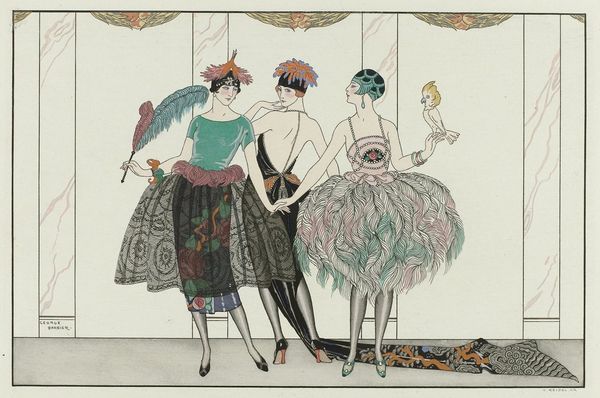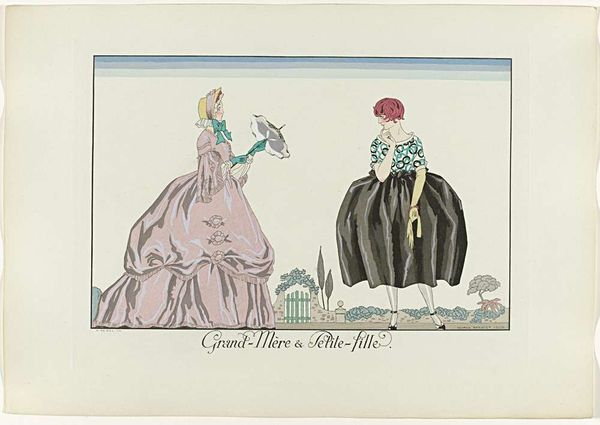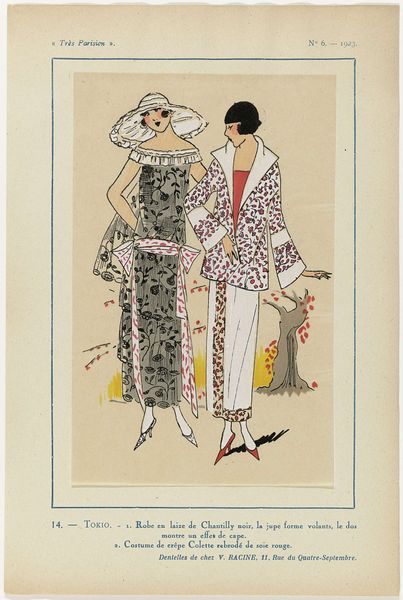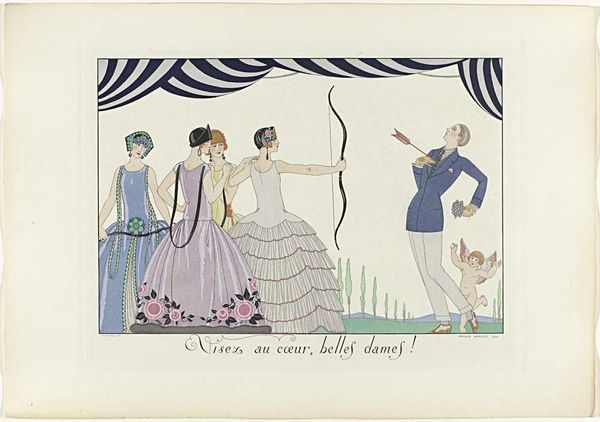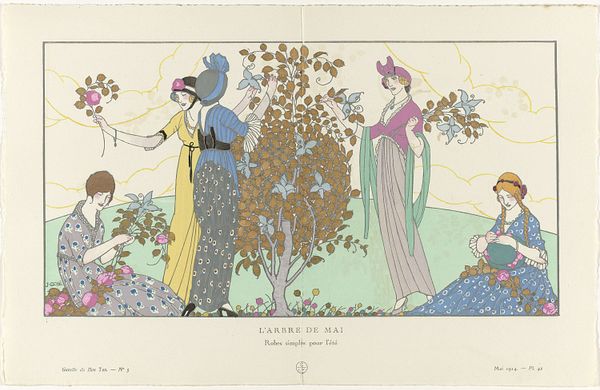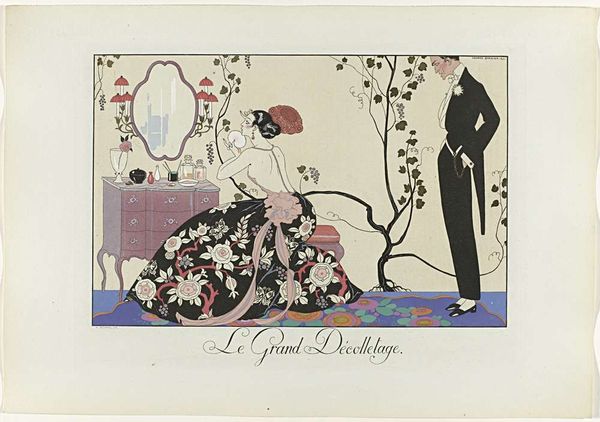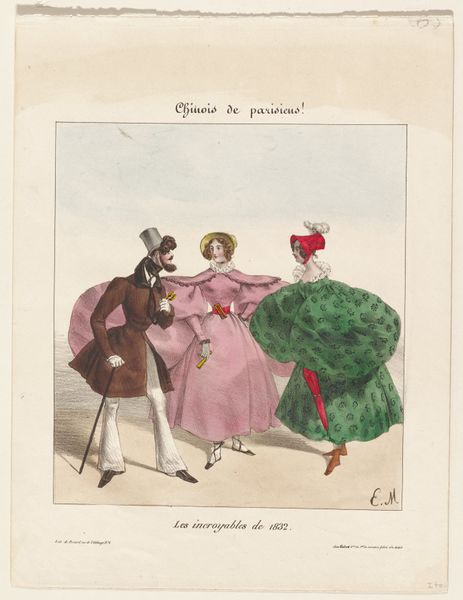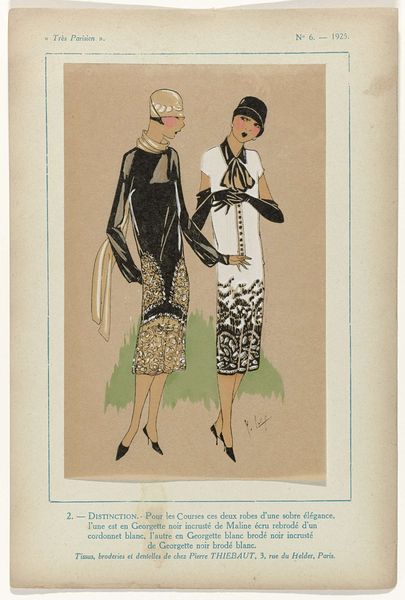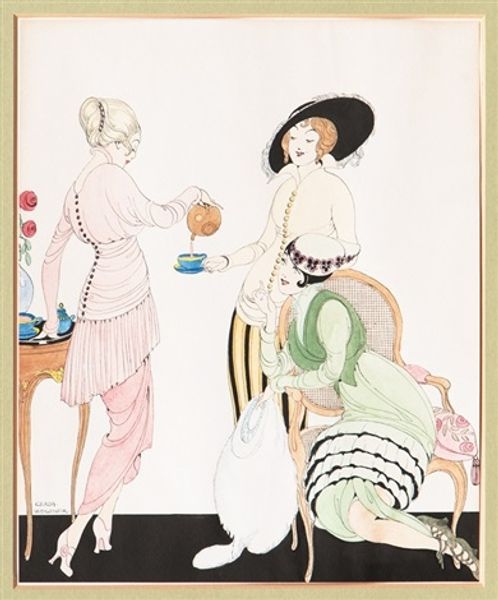
painting, watercolor
#
portrait
#
art-nouveau
#
painting
#
figuration
#
watercolor
#
historical fashion
#
watercolour illustration
#
decorative-art
Dimensions: height 310 mm, width 448 mm
Copyright: Rijks Museum: Open Domain
Henri Reidel's "Les Belles Sauvagesses de 1920," likely a pochoir print, captures the spirit of its age with its elegant, stylized figures. Note the overt symbols of exoticism: feathers, fringed fabrics, and a woman holding a parrot. These symbols are deeply rooted in our collective psyche. For centuries, feathers have denoted status and a connection to the divine, seen in ancient Egyptian headdresses or indigenous tribal wear. Parrots, often perceived as symbols of imitation and exoticism, have been motifs in art, literature, and mythology. Think back to classical depictions of paradise, like in illuminated manuscripts from the medieval times. They are all laden with exotic birds and lush foliage. Then consider how those images influenced the European imagination during the Age of Exploration, shaping perceptions of the "savage" and the "exotic." The title itself is a psychological provocation. "Sauvagesse," evoking both beauty and untamed nature, plays on our ingrained fascination with the "other." It reflects a cultural drive to tame and categorize the unfamiliar, a practice that is, perhaps, an essential aspect of the human condition. Ultimately, the artwork highlights how symbols never truly disappear; they evolve, resurface, and perpetually echo through the corridors of cultural memory.
Comments
No comments
Be the first to comment and join the conversation on the ultimate creative platform.
